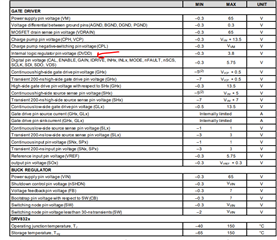Hi, Ti Team
We use DRV8323RS Gate Driver.
1. I would like a detailed internal block diagram of where DVDD is used.(Please be sure to reply.)
2. When decoupling capacitor is not installed on the DVDD pin:

a) Offset (1.65v) of the bi-directional current sensor sometimes does disappear.
b) When the power is turned on, if an unwanted offset value is output to the current sensor output signal, it continues to be output until the power is turned off.
c) Does the current sense setting change depending on whether the DVDD decoupling capacitor is installed or not?
(Defalut Bidirection -> Power On, Unidirection)
*Please provide detailed answers to all questions.



